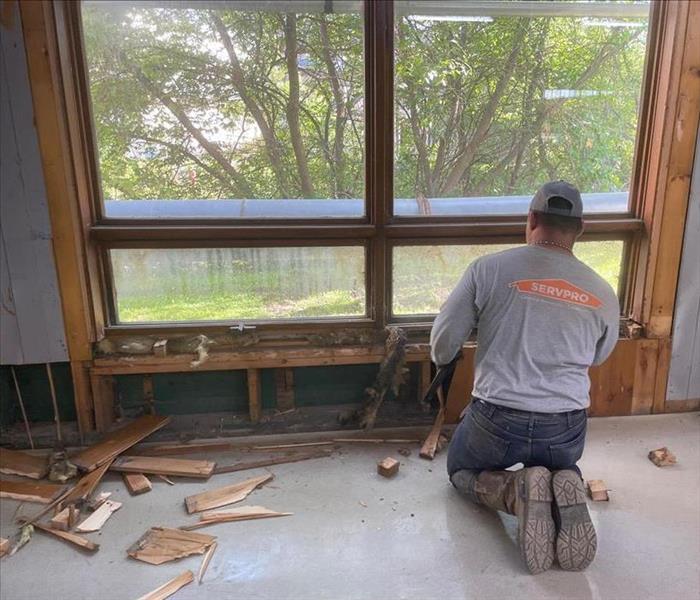Understanding Mold in Your Attic: Causes and Effective Solutions
7/10/2024 (Permalink)
 We delve into the causes of mold in your attic and provide practical solutions for preventing and remedying this issue.
We delve into the causes of mold in your attic and provide practical solutions for preventing and remedying this issue.
Mold growth in the attic is a common problem faced by many homeowners. The attic provides an ideal environment for mold to thrive, with its dark, warm, and often humid conditions. In this blog post, we'll delve into the causes of mold in your attic and provide practical solutions for preventing and remedying this issue.
Causes of Mold in the Attic
Poor Ventilation:
One of the primary causes of mold in the attic is poor ventilation. Inadequate airflow allows moisture to accumulate, creating a damp environment that promotes mold growth. Without proper ventilation, humidity levels in the attic can rise, especially during hot and humid weather.
Roof Leaks and Water Intrusion
Roof leaks and water intrusion are common culprits behind mold growth in the attic. A leaking roof, damaged flashing, or compromised seals around vents and chimneys can allow water to penetrate into the attic space. Even minor leaks can lead to significant moisture buildup over time, providing ideal conditions for mold to flourish.
Insufficient Insulation
Insufficient insulation in the attic can contribute to mold growth by allowing warm, moist air from the living space below to penetrate into the attic. When warm air meets the cooler surfaces of the attic, condensation can form, creating moisture that promotes mold growth on insulation, wood framing, and other materials.
Blocked Attic Vents
Blocked or inadequate attic vents can impede airflow and exacerbate moisture buildup in the attic. Blocked vents can result from debris accumulation, improper installation, or damage to the venting system. Without proper ventilation, moisture becomes trapped in the attic, creating an environment conducive to mold growth.
Solutions for Mold in the Attic
- Improve Attic Ventilation: Address poor ventilation by installing additional vents or improving existing ventilation systems in the attic. Ridge vents, soffit vents, gable vents, and attic fans can help promote airflow and reduce moisture buildup.
- Repair Roof Leaks and Water Intrusion: Address any roof leaks or water intrusion issues promptly to prevent further moisture infiltration into the attic. Repair damaged roofing materials, flashing, and seals to ensure a watertight barrier against the elements.
- Upgrade Attic Insulation: Improve attic insulation to prevent warm, moist air from entering the attic space. Proper insulation helps maintain consistent temperatures and reduces the risk of condensation and moisture buildup that can lead to mold growth.
- Clear Attic Vents and Ensure Proper Maintenance: Regularly inspect and clean attic vents to ensure they are free from debris and obstruction. Trim overhanging branches, remove leaves and debris, and repair damaged vents to maintain proper airflow in the attic.
Mold growth in the attic can be a persistent and concerning issue for homeowners. By understanding the causes of mold in the attic, such as poor ventilation, roof leaks, insufficient insulation, and blocked vents, you can take proactive measures to prevent mold growth and protect your home. Implementing solutions such as improving attic ventilation, repairing roof leaks, upgrading attic insulation, and ensuring proper maintenance of attic vents can help mitigate the risk of mold in your attic and maintain a healthy indoor environment. If you require assistance with mold remediation or attic restoration, contact a professional restoration company like SERVPRO® for expert assessment and remediation services.

 24/7 Emergency Service
24/7 Emergency Service